
The California grizzly bear is an extinct population of the brown bear, generally known as the grizzly bear. "Grizzly" could have meant "grizzled" – that is, with golden and grey tips of the hair – or "fear-inspiring". Nonetheless, after careful study, naturalist George Ord formally classified it in 1815 – not for its hair, but for its character – as Ursus horribilis. Genetically, North American brown bears are closely related; in size and coloring, the California grizzly bear was much like the Kodiak bear of the southern coast of Alaska. The grizzly became a symbol of the Bear Flag Republic, a moniker that was attached to the short-lived attempt by a group of U.S. settlers to break away from Mexico in 1846. Later, this rebel flag became the basis for the state flag of California, and then California was known as the "Bear State".

Frank Romer Pierson was an American screenwriter and film director.

The Life and Times of Grizzly Adams is a 1974 independent feature film produced by Charles E. Sellier Jr. and Raylan D. Jensen for Sunn Classic Pictures. The film's popularity led to an NBC television series of the same name. The title character, played by Dan Haggerty, was loosely based on California mountain man John "Grizzly" Adams (1812–1860).
Frontierland is one of the "themed lands" at the many Disneyland-style parks run by Disney around the world. Themed to the American frontier of the 19th century, Frontierlands are home to cowboys and pioneers, saloons, red rock buttes and gold rushes along with some influence from American history and North America in general. It is named Westernland at Tokyo Disneyland and Grizzly Gulch at Hong Kong Disneyland.
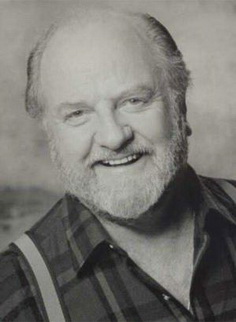
Christopher John Wiggins was an English-born Canadian actor.

Grizzly is a 1976 American horror thriller film directed by William Girdler, about a park ranger's attempts to halt the wild rampage of an 18 ft (5.5 m) tall, 2,000 lb (910 kg) man-eating grizzly bear that terrorizes a National Forest, having developed a taste for human flesh. However, a drunken hunting party complicates matters. It stars Christopher George, Andrew Prine and Richard Jaeckel. Widely considered a Jaws rip-off, Grizzly used many of the same plot devices as its shark predecessor, which had been a huge box office success during the previous year. The giant grizzly bear in the film was portrayed by a Kodiak bear named Teddy, who was 11 ft (3.4 m) tall.
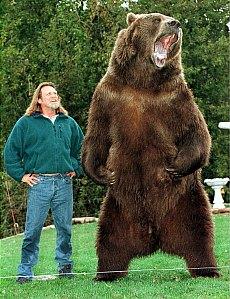
Bart the Bear was a male Kodiak bear best known for his numerous appearances in films, including The Bear, White Fang, Legends of the Fall, and The Edge. He was trained by animal trainers Doug and Lynne Seus of Wasatch Rocky Mountain Wildlife, Inc., in Heber City, Utah.
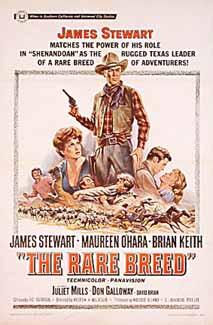
The Rare Breed is a 1966 American Western film directed by Andrew V. McLaglen and starring James Stewart, Maureen O'Hara and Brian Keith in Panavision. Loosely based on the life of rancher Col. John William Burgess, the film follows Martha Evans's (O'Hara) quest to fulfill her deceased husband's dream of introducing Hereford cattle to the American West. The film was one of the early major productions to be scored by John Williams, who was billed as "Johnny Williams" in the opening credits.

The Bear is a 1988 French adventure family film directed by Jean-Jacques Annaud and released by TriStar Pictures. Adapted from the novel The Grizzly King (1916) by American author James Oliver Curwood, the screenplay was written by Gérard Brach. Set in British Columbia, Canada, the film tells the story of an orphaned grizzly bear cub who befriends a large adult male Kodiak bear as two trophy hunters pursue them through the wild.

Hercules was a trained grizzly bear from Scotland who appeared in a number of cameo roles for various television productions, reaching the height of his popularity in the 1980s.
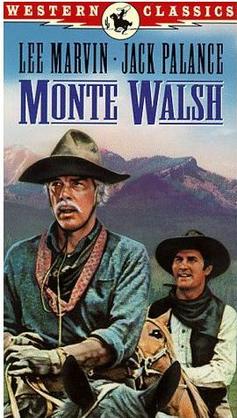
Monte Walsh is a 1970 American Western film directed by cinematographer William A. Fraker starring Lee Marvin, Jeanne Moreau and Jack Palance. The name "Monte Walsh" is taken from the title of a 1963 western novel by Jack Schaefer, but the film has little to do with the plot of Schaefer's book. The film was set in Harmony, Arizona. The story has elements of a tragedy. The song played over the opening credits is "The Good Times Are Comin' " by Mama Cass, with music and lyrics by John Barry and Hal David.
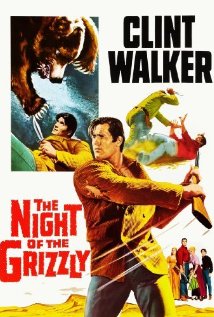
The Night of the Grizzly is a 1966 Western film starring Clint Walker, Martha Hyer, Keenan Wynn, Jack Elam and Nancy Kulp. Directed by Joseph Pevney and written by Warren Douglas, the film was released by Paramount Pictures on April 20, 1966. It was Pevney's final feature film.

Cowboy is a 1958 American Western film directed by Delmer Daves and starring Glenn Ford, Jack Lemmon, Anna Kashfi and Brian Donlevy. This film is an adaptation of the Frank Harris semi-autobiographical novel My Reminiscences as a Cowboy. Lemmon's character is based on Harris. The opening animated title sequence was created by Saul Bass. The screenwriters were Edmund H. North and Dalton Trumbo - the latter received no screen credit at the time because he had been blacklisted as one of the Hollywood Ten.

Grizzly Rage is a 2007 Canadian television horror film produced by RHI Entertainment that premiered in Canada on the video-on-demand channel Movie Central On Demand on June 7, 2007. It aired in the United States on the Sci Fi Channel on September 16, 2007. Filmed in Winnipeg, Manitoba, the film is the 2nd title in the Maneater Series produced under an agreement with Syfy. Featuring a cast of four, the film focuses on a group of teenagers who struggle to survive in a restricted forest while an enraged grizzly bear hunts them relentlessly seeking retribution for killing its cub.

Gunsmoke is a 1953 American Western film directed by Nathan Juran and starring Audie Murphy, Susan Cabot, and Paul Kelly. The film has no connection to the contemporary radio and later TV series of the same name. The film was based on the 1951 novel Roughshod by Norman A. Fox.

Public Cowboy No. 1 is a 1937 American Western film directed by Joseph Kane and starring Gene Autry, Smiley Burnette, and Ann Rutherford. Based on a story by Bernard McConville, the film is about a singing cowboy who chases down rustlers who are using airplanes, shortwave radios, and refrigerated trucks to steal cattle.

Brand of the Outlaws is a 1936 American Western film directed by Robert N. Bradbury for A. W. Hackel's Supreme Pictures.

Home on the Range is a 1946 American Western film directed by R. G. Springsteen and written by Betty Burbridge. The film stars Monte Hale, Lorna Gray, Bob Nolan, Tom Chatterton, Robert Blake and LeRoy Mason. The film was released on April 18, 1946, by Republic Pictures.
The Schilling Ranch Historic District is a tiny portion of a historic ranch in Cochise County, Arizona which was listed on the National Register of Historic Places in 2009. It consists of several structures built in the early to mid-1900s. It is representative of the infrastructure required by cattle ranching operations in the Southwestern United States. It was used as a central location for cattle roundups from the surrounding cattle ranches, before shipment to the Willcox cattle auctions.

















